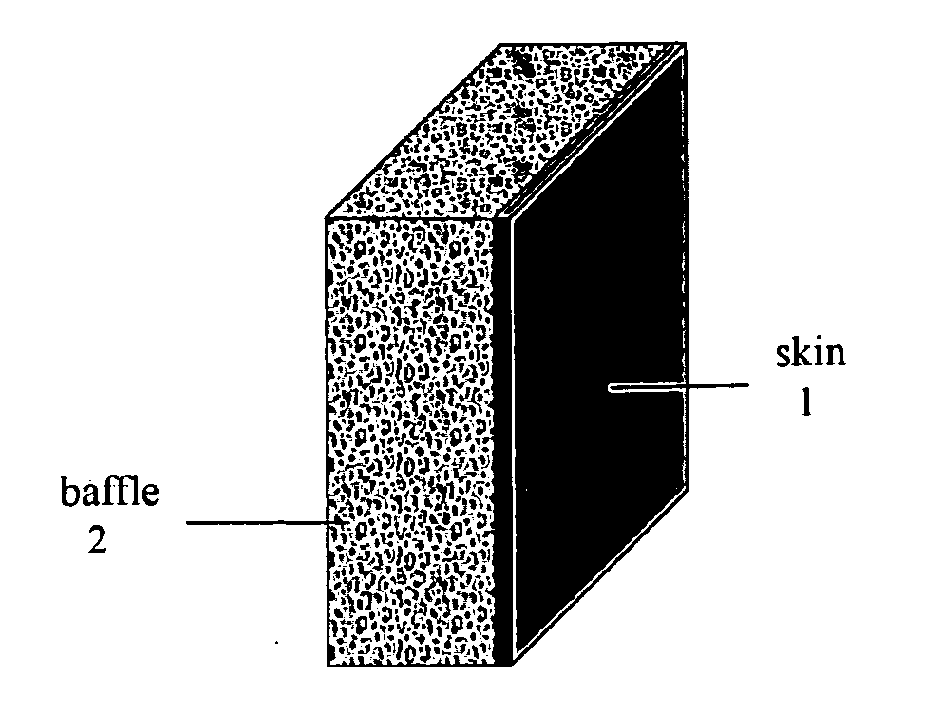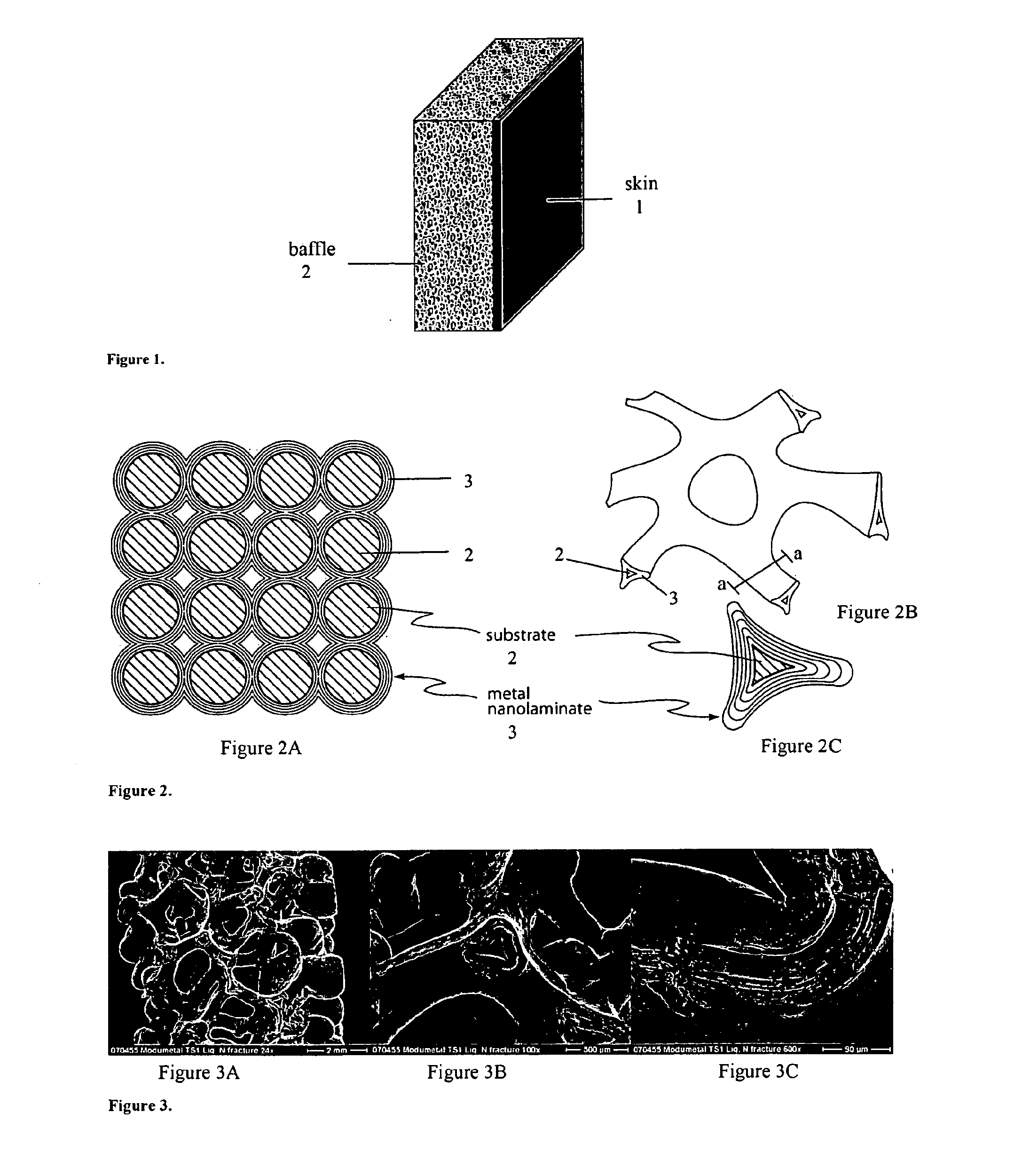Nanolaminate-reinforced metal composite tank material and design for storage of flammable and combustible fluids
- Summary
- Abstract
- Description
- Claims
- Application Information
AI Technical Summary
Benefits of technology
Problems solved by technology
Method used
Image
Examples
example 1
[0073]A fuel tank for a vehicle can be formed to have an interior portion made from a preform of reticulated vitreous carbon, a fuel shell made of a nanolaminate coating including Ni and Fe, an exterior foam or porous layer formed of a conductive fabric, and an exterior shell including a Ni / Fe nanolaminate coating (which can either be identical to the fuel shell layer or have a different composition and / or structure than the fuel shell layer). Both the fuel shell and exterior shell nanolaminate coatings are formed by means of electrodeposition.
[0074]To form the fuel tank, a bath including 0.2M Ni(NH2SO3)2.4H2O, 0.2M FeCl24H2O, 0.40M H3BO3, 1.5 g / L sodium saccharin, 0.2 g / L sodium dodecyl sulfate, 1.0 g / L ascorbic acid, and enough sulfamic acid or nickel carbonate to attain a pH level of 3.00±0.01 is prepared. Anodes formed of titanium baskets including nickel S-rounds are obtained. The baskets are selected such that a nominal basket area is equal to or greater than a nominal workpi...
example 2
[0082]A small rectangular composite fuel tank including a 20 PPI (pores per inch) reticulated vitreous carbon foam preform and an electrodeposited compositionally modulated NiFe alloy was formed in a laboratory using the following procedure. A bath was prepared using 0.2M Ni(H2NSO3)2.4H2O, 0.04 M FeCl2.4H2O, 0.40M H3BO3, 1.5 g / L sodium saccharin, 0.2 g / L sodium dodecyl sulfate, 1.0 g / L ascorbic acid, and sulfamic acid to attain a pH of 3.00±0.01. A 10″ by 10″ by 1″ piece of 20 PPI reticulated vitreous carbon foam preform was rigidly mounted in an insulating frame which suspended the preform in the frame's center by a finite number of small conducting elements, or contacts. The contacts were contained and insulated within the frame such that they did not come into contact with the electroplating bath once immersed, and terminated at a single bus located at the top edge of the insulating frame. This bus was in turn connected to two 10 gauge hooks which allowed the entire assembly to h...
example 3
[0087]A small rectangular composite fuel tank including a 20 PPI (pores per inch) reticulated vitreous carbon foam preform and an electrodeposited nickel reinforcement was formed in a laboratory using the following procedure.
[0088]A commercial nickel sulfamate plating bath was purchased from Technic, Inc. A 10″ by 10″ by 1″ piece of 20 PPI reticulated vitreous carbon foam preform was rigidly mounted in an insulating frame which suspended the preform in the frame's center by a finite number of small conducting elements, or contacts. The contacts were contained and insulated within the frame such that they did not come into contact with the electroplating bath once immersed, and terminated at a single bus located at the top edge of the insulating frame. This bus was in turn connected to two 10 gauge hooks which allowed the entire assembly to hang from a bus bar mounted across the top of a plating tank. The frame was designed to provide electrical contact to the preform while not distu...
PUM
| Property | Measurement | Unit |
|---|---|---|
| Fraction | aaaaa | aaaaa |
| Thickness | aaaaa | aaaaa |
| Power | aaaaa | aaaaa |
Abstract
Description
Claims
Application Information
 Login to View More
Login to View More - R&D
- Intellectual Property
- Life Sciences
- Materials
- Tech Scout
- Unparalleled Data Quality
- Higher Quality Content
- 60% Fewer Hallucinations
Browse by: Latest US Patents, China's latest patents, Technical Efficacy Thesaurus, Application Domain, Technology Topic, Popular Technical Reports.
© 2025 PatSnap. All rights reserved.Legal|Privacy policy|Modern Slavery Act Transparency Statement|Sitemap|About US| Contact US: help@patsnap.com



